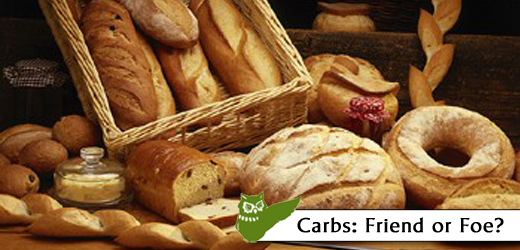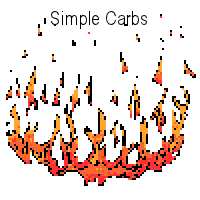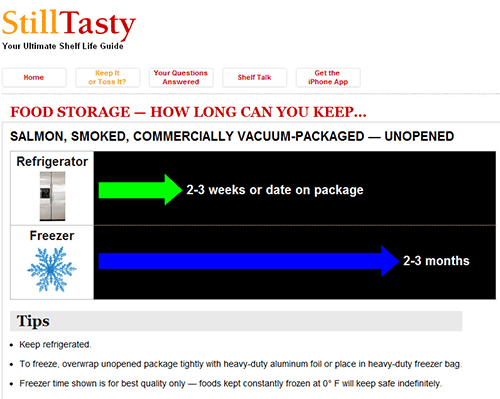“Good” Carbs vs. “Bad” Carbs
Mar 15th, 2012 by Enrico

Carbohydrates have come up a lot in health discussions recently. However, most people know little or nothing about them. Let’s have our own discussion. More specifically, what are good carbs and bad carbs?
What are Carbohydrates?
Simply speaking, carbohydrates are the body’s main source of energy. Without sufficient consumption of carbohydrates, you run the risk of getting all kinds of nasty things like muscle cramps, fatigue, poor mental function, and decreased resistance to disease.
However, it is incredibly important to understand the different types of carbohydrates you put into your body. For the sake of this discussion, let’s focus on the two main types.
1) Simple “Bad” Carbohydrates
Simple carbohydrates or “simple sugars” are what’s commonly referred to as the “bad” carbohydrate. They are the reason for the sweet taste in our food.
Examples: fruit sugar, table sugar, corn sugar
Effect on Body:
- Directly absorbed in the blood to fill glucose requirements of the body
- Instant Energy
Why they are bad: Instant energy is only beneficial if you use it right away. But in reality, most people will not burn all of the carbs consumed. The excess then goes to fat.
2) Complex “Good” Carbohydrates
Complex Carbohydrates, or what people call “Good” carbs, are actually the combination of many types of sugars. The more complex the molecular compound, the longer it takes to break down through digestion.
Examples: cereals, whole-grain bread, pasta, fruits, nuts, seeds
Effect on Body:
- Fills you for longer period of time
- Constant, Slow-burning Energy
Why they are good: The slow-burning characteristic that are found in complex carbs provide a steady supply of energy to the body. Most lower activity levels work best with complex carbs due to the “take-as-you-go” energy system.
Simple vs. Complex Carbs
Remember: The best carbohydrate to eat is entirely based on your body’s needs. When I think about carbs, I always think of this concept: A campfire.

Imagine lighting a fire with gasoline. Sure, you will have a large, bright flame, but it will be short-lived. The same goes for simple carbs. You will burn them very quickly and feel an intense rush of energy, but only for a short time.

Now, imagine the same campfire. Only now, your fire is lit by large logs. The fire is not as bright, but it burns consistently for hours. There logs are like complex carbs. A moderate amount of energy over a long period of time.
When choosing what carbohydrates to consume, remember that your consumption should fit your activity level. For most people, complex carbs are favored for their slow release of energy. This is also the reason why they are referred to as “good” carbs.




